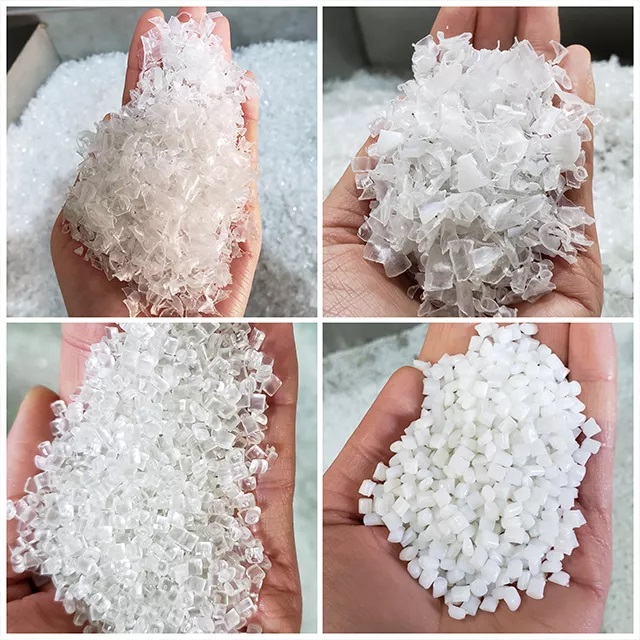PET is highly hygroscopic and absorbs moisture from the atmosphere. Tiny amounts of moisture can hydrolyse PET within the melt part, reducing molecular weight. PET should be dry just prior to processing, and amorphous PET needs crystallization prior to drying so that the particles don’t stick together as they’re going through glass transition.
Hydrolysis can occur due to moisture and this often can be seen as a reduction in the IV (Intrinsic Viscosity) of the product. PET is “semi-crystalline”. When the IV is reduced, the bottles are more brittle and tend to fail at the “gate” (injection point) during blowing and filling. It is very possible that due to the initial moisture level in the resin, and the amount removed during vacuum that a significant amount of moisture still remains as it is reaching its melt phase in the extruder.
In its “crystalline” state it has both crystalline and amorphous portions in its molecular structure. The crystalline portion develops where the molecules can align themselves in a very compact linear structure. In the non-crystalline regions the molecules are in a more random arrangement. By insuring that your crystallinity is high, prior to processing, the result will be a more uniform and higher quality product.
Another thing to consider is the number of times the PET has been processed. Each time the PET is processed there is a reduction in IV. Therefore, PET that has been used to make a bottle, recycled and used again, does not have the IV of the original bottle. Each time the bottle is recycled, the IV is further reduced. This is why a percentage of virgin resin is often added to increase the products properties.
Flake size is determined by the grinder. I have seen customers who think that ¼ inch is perfect and those who think ¾ is best. The smaller the flake the more fines will be produced and the better the material will flow in the drying hopper and vacuum chambers. Extremely fine grinds tend to lead to higher pressure drop in the hopper and can cause reduced air flow and uneven distribution. Large grinds can sometimes cause uneven hopper material flow.
60% regrind or more is common in extrusion. Most bottle applications are less than 10% for food and beverage and less than 30% otherwise. It depends on the source of the regrind and the end product. Blow molding is more difficult when you use material with different heat history and IV. Fines can also cause processing problems.
The disadvantage of using regrind versus virgin resin is that regrinds have a heat history and have a significantly lower IV (Intrinsic Viscosity). Lower IV in the finished part causes it to be more brittle/less flexible. The second disadvantage is that there tends to be more “yellowing” in regrind materials that can cause a color or haziness issue.
It is more important to remove the moisture than to heat it. However, it is very difficult to measure moisture on-line in a process so time and temperature is generally used to set the moisture level achieved. For instance, with PET processing, it is generally assumed that if there is 4-6 hours in the drying hopper at 325-350° F, the moisture will be reduced to less than 50 ppm.
After the PET has been formed into a sheet, there isn’t typically any additional pre-conditioning required before thermoforming. The sheet will undergo heat in the thermoforming and as long as it doesn’t approach the melt temperature the process just changes the shape of the already formed sheet and the stresses imparted to the sheet tend to give it strength.
In general, crystallizing master batch can have a lot of drying/crystallizing issues. Unless the quantity is so large that you can afford to purchase a crystallizer, buying crystallized master batch is probably preferred.
We at KERONE have a team of experts to help you with your need for PET flakes crystallizer and dryer in various products range from our wide experience.

